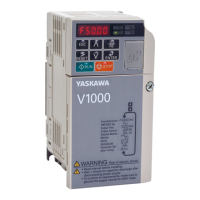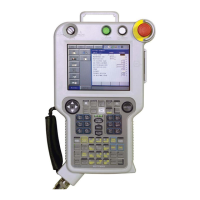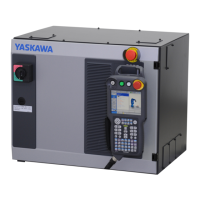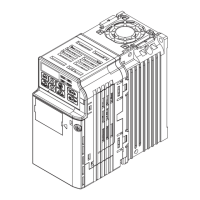n
n1-10: Suppression Frequency
There is normally no need to change this parameter from the default value.
Note: This parameter is available in drive software versions PRG: 1017 and later.
No. Name Setting Range Default
n1-10 Suppression Frequency 5.0 to 100.0 Hz 10.0 Hz
n
n1-11: Suppression Auxiliary Frequency
There is normally no need to change this parameter from the default value.
Note: This parameter is available in drive software versions PRG: 1017 and later.
No. Name Setting Range Default
n1-11 Suppression Auxiliary Frequency 10.0 to 50.0 Hz 20.0 Hz
n
n1-12: Vibration Suppression Time Constant
There is normally no need to change this parameter from the default value.
Note: This parameter is available in drive software versions PRG: 1017 and later.
No. Name Setting Range Default
n1-12 Vibration Suppression Time Constant 0 to 1000 ms 0 ms
u
n2: Speed Feedback Detection Control (AFR) Tuning
These parameters help achieve speed stability when a load is suddenly applied or removed.
Note: Properly set all motor parameters or perform Auto-Tuning before making changes to the AFR parameters.
n
n2-01: AFR Gain
Sets the internal speed feedback detection control gain in the AFR.
No. Name Setting Range Default
n2-01 AFR Gain 0.00 to 10.00 1.00
Although this parameter rarely needs to be changed, it may require adjustment in the following situations:
• If hunting occurs, increase the setting value in steps of 0.05 while checking the response.
• If response is low, decrease the setting value in steps of 0.05 while checking the response.
n
n2-02: AFR Time Constant 1
Sets the time constant normally used by AFR.
No. Name Setting Range Default
n2-02 AFR Time Constant 1 0 to 2000 ms 50 ms
Although this parameter rarely needs to be changed, adjustment may be required in the following situations:
• If hunting occurs, increase the value. If response is low, decrease it.
• When setting the parameter to a higher value, increase C4-02, Torque Compensation Delay Time Constant 1, proportionally.
u
n3: Overexcitation Braking
n
Overexcitation Deceleration (Induction Motors)
Increases the flux during deceleration and allows shorter deceleration time settings. Enabled by setting L3-04 to 4. Refer to
L3-04: Stall Prevention Selection during Deceleration on page 318.
Notes on Overexcitation Deceleration
• During Overexcitation Deceleration 2, Hunting Prevention in V/f Control and torque limits in OLV Control are disabled.
• Overexcitation Deceleration can be used in OLV and CLV, but it lowers the accuracy of Torque Control and braking
efficiency. It can be most efficiently used in a V/f Control.
• Overexcitation Deceleration cannot be used with PM motors.
5.9 n: Special Adjustments
YASKAWA ELECTRIC SIEP C710636 04D U1000 Industrial MATRIX Drive Technical Manual
335
5
Parameter Details

